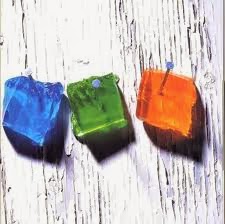A bird let loose a fine, fertile mixture of urine and feces from its cloaca onto my head on Christmas Day. Yes, a bird pooped on me.
I expect my face looked similar to this house finch:
The Italian (and other cultures') superstitions of a bird pooping on you being good luck is even mentioned in the Cornell Lab of Ornithology Web page:
"Flying Poop"
"Q: I have been asked to find out if Canada Geese, um, poop while they fly. I'm sure you have more important issues, but this is very important to the seven-year-old who goes to the driving range with me.
A: Birds are certainly capable of pooping while flying. They often poop just before taking off, perhaps to lighten their load. Although this might not reassure your seven-year-old, you might also mention that in some cultures people believe that is very good luck to be hit by bird poop."
Having been through the experience of being "one in a million," I can tell you it sure doesn't feel so lucky, being a ways from home on a sunny Colorado day. . .as I passed fellow merry, well-wishing, chatty walkers with black-gray goo running from my hair down the side of my face. But, with a shower and some retrospective, I do realize how lucky I am. A friend reassured me with this photo of an egret (look at those ruffled neck feathers ;-)) and a nice landing:
I am especially lucky because this is the second time I have been pooped on.The first was outside an Italian (maybe the birds knew?) restaurant in downtown Denver. We stood outside the restaurant looking at the menu posted on the exterior wall when, sure enough, a pigeon let loose on my head and clothing. When I went into the restaurant to get cleaned up, the waiter laughed and said "Oh, yeah, they do it all the time with people standing there looking at the menu." Ha! Funniest Home Videos for Birds. I did think I heard the other pigeons cavorting afterward. It's good to know they have a sense of humor.
I am also lucky and grateful for family, friends, fellow bloggers, and National Public Radio (and for the serial comma). The recent Science Friday rebroadcast on Temple Grandin, the autism spectrum, and her description of seeing life in pictures rather in words (as she proposes animals also do) struck me (post the recent avian experience):
With the recent advent of increasing photographs and images on social media (Facebook, Instagram, SnapChat, and the like), we are all seeing life in more and more pictures. Though, being such a word lover, I truly hope we never go completely to a world of all images. What would I do with these thousand words I have stored up ready to go? All the puns waiting to be launched?
Wishing you all a happy, safe, fertile year for 2014. The Christmas bird has deposited lots of seeds for blog topics for 2014 (the milky blue blood of horseshoe crabs, squid, and cuttlefish, "expanding" chickadee brains, as well as trilobite eyes and modern photography). Here's a preview of a majestic trilobite eye:
Are there other topics that Partial Ellipsis of the Sun (PEOTS) might explore next year? I look forward to your ideas, suggestions, and seeds of thought. And, thanks for swooping on by.














































funny.jpg)



